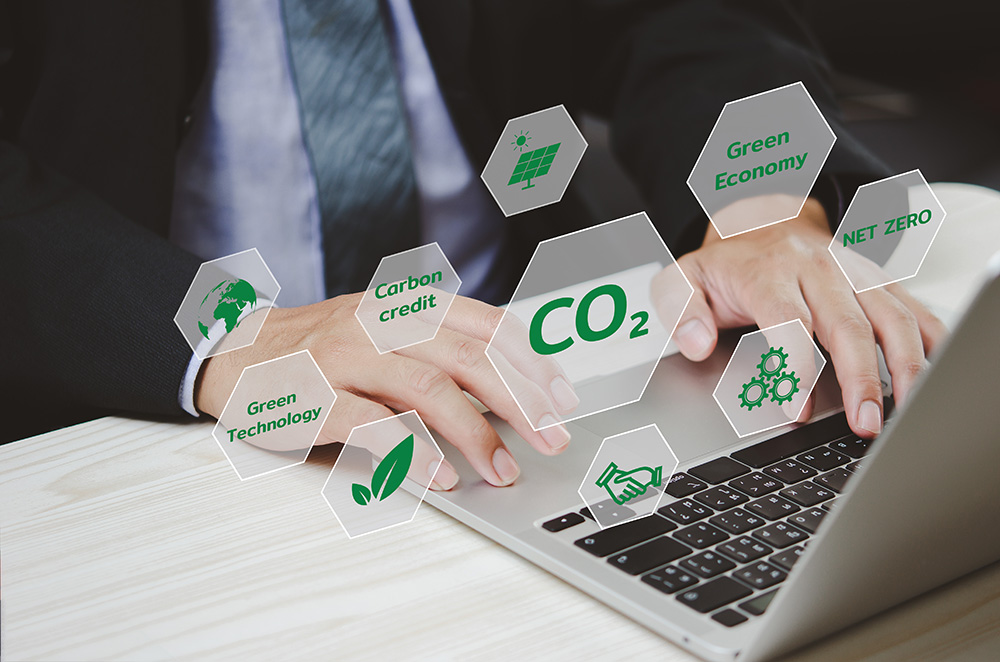
Key takeaways
- Vietnam carbon market is planned to be piloted from 2025 to 2027, and officially operate from 2028.
- The domestic carbon market operates under a “cap and trade” mechanism, wherein the primary participants are greenhouse gas (“GHG”) emitting establishments. These participants engage in transactions that involve the exchange of reduced GHG quantities, manifested in two forms: GHG Emission Quotas and Carbon Credits.
- The carbon market and the relevant compliance requirements are considered to impact the business activities of enterprises in many aspects, however it also potentially open a new channel to generate revenue for enterprises, especially those in green industries.
Legal framework and general description of the domestic carbon market
Participants
- Thermal power plants, industrial production facilities with a total annual energy consumption of 1,000 tons of oil equivalent (TOE) or more;
- Cargo transportation companies with a total annual fuel consumption of 1,000 TOE or more;
- Commercial buildings with a total annual energy consumption of 1,000 TOE or more;
- Solid waste treatment facilities with an annual operating capacity of 65,000 tons or more.
Furthermore, every two (2) years, based upon the said criteria, the Prime Minister will decide to update the list of specific sectors and establishments subject to GHG inventory for further identification of Emitting Establishments.
Regulated objects
The objects exchanged in the carbon market consist of reduced GHG emissions, expressed in two forms which are GHG Emission Quotas and Carbon Credits, under which:
- GHG Emissions comprise atmospheric gases responsible for the greenhouse effect, including carbon dioxide (CO2), methane (CH4), and nitrous oxide (N2O), along with low-concentration yet potent GHG like hydrofluorocarbons (HFCs), perfluorocarbons (PFCs), sulfur hexafluoride (SF6), and nitrogen trifluoride (NF3).
- GHG Emission Quotas mean the permissible quantity of GHG emissions of a nation, organisation, individual that is permitted to emit within a specified timeframe, measured in metric tons of CO2 or equivalents.
- A Carbon Credit means a certificate that is commercially tradable and represents the right to emit one tonne of carbon dioxide (CO2) or equivalent. In specific, Carbon Credits can be obtained from programs and projects under the mechanism of exchange and offset Carbon Credits are allowed to be converted into clearing units for GHG Emission Quotas on the trading floor. One (1) Carbon Credit is equal to one (1) tonne of CO2 equivalent.
Operation mechanism
At each commitment period as set out from time to time, each Emission Establishment shall be allocated specific GHG Emission Quotas according to the formulation of GHG Emission norms per product unit as promulgated by the Ministry of Natural Resources and Environment (i.e., the MONRE). These Emission Establishments are only permitted to emit GHG Emissions within their allocated allowance. In the event of exceeding the allocated GHG Emission Quotas, they may engage in permissible exchange activities to have more quotas. These activities are conducted through the carbon credit exchange.
The activities involved in the exchange of GHG Emission Quotas and Carbon Credits encompass buying, selling, auctioning, borrowing, paying, and transferring. Accordingly, the Emission Establishments:
- may partake in auctions to own more GHG Emission Quotas in addition to the amount of GHG Emission Quotas allocated in the same one commitment period;
- may transfer unused amount of GHG Emission Quotas in the previous year to the following years within the same one commitment period;
- may borrow GHG Emission Quotas allocated for the following year to utilize in the preceding year within the same one commitment period;
- may employ Carbon Credits from projects under the carbon credit exchange and offsetting mechanisms to compensate for their GHG Emissions in excess of their GHG Emission Quotas allocated in the same one commitment period. However, such offset may not exceed 10% of the total GHG Emission Quotas allocated to such establishments;
- at the end of the commitment period, are required to make payment for GHG emissions that exceed the allocated GHG emission quotas after applying the aforesaid forms of exchange mechanisms. In addition to the payment, GHG emissions in excess of the allocated quotas will be deducted from the allocated quotas for the subsequent commitment period.
The deployment of the carbon market and its impact on enterprises
Under Decree 06, the Government has laid out a roadmap with the following timelines for the development of the domestic carbon market:
- As from 2025, the carbon credit exchange will be piloted.
- Till the end of 2027, the regulations on carbon credit management, the exchange of GHG emission quotas and carbon credits, and the operational framework of the carbon credit exchange will be formulated.
- As from 2028, the carbon credit exchange will be officially operated with regulations on interconnecting the domestic carbon market with regional and global carbon markets.
The carbon market is anticipated to bring numerous opportunities for enterprises, particularly those possessing carbon credits from green projects, as it is considered to open avenues for revenue generation through trading GHG Emission Quotas or Carbon Credits. Moreover, with a stable legal framework, Vietnam’s carbon market has the potential to attract foreign investors in participating the domestic carbon market, which would increase investments in green sectors such as renewable energy, clean fuels, eco-friendly industries, etc.
On the other side, the establishment of the domestic carbon market also poses challenges for the business operations of enterprises as this will restrict productivity based on emission quotas, increase compliance costs, cause pressure to undertake technological transformations, and potentially impacts the competitiveness of enterprises.
Epilogue
The carbon market serves as an effective tool for Vietnam to achieve its environmental goals while ensuring economic policies. However, amidst the ongoing process of building and developing the carbon market, its impact on business operations and production necessitates increased attention to relevant environmental policies. Enterprises must proactively equip themselves with knowledge about the carbon market and carbon pricing mechanisms, enabling them to attain the desired outcomes that these policies bestow.
———————-
[1] The prevailing specific sectors and the GHG emitting establishments subject to emission inventory are listed in Appendix I and II, respectively, of Decision 01/2022/QD-TTg dated 18 January 2022 of the Prime Minister on the promulgation of lists of sectors and GHG emission facilities subject to GHG inventory development.











